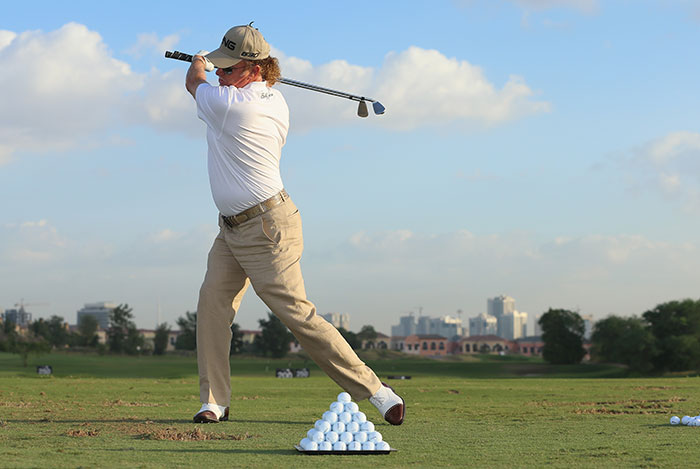Upper-extremity joint injuries are common. This is primarily due to the impact between the golf club and the ‘big ball’ we call earth. Injuries to the wrist, elbow and shoulder joints are either acute, caused by direct impact; or chronic, those that are repetitive and overused.
This injury is called lateral epicondylitis, or ‘tennis elbow’. It is inflammation in the tendon on the lateral aspect of the forearm at the elbow joint. This tendinitis can become painful and render your arm useless.
However, tendinitis is actually not the problem at all. It is often the result of poor mechanics of the shoulder joint that causes an overload of the soft tissues of the elbow.
Most treatments are focused on the inflammation of the tendon and injections or surgery is prescribed. This does not address the root cause. Poor mobility of the shoulder and/or wrist causes instability in the elbow. To overcome this, one has to improve not only mobility in the shoulder, but also stability of the shoulder blades.
This problem is further exacerbated by poor swing mechanics. I have included a number of exercises intended to improve stability in the scapulae and elbow, and increase mobility in the shoulder.
Rotator Cuff Integrator
Sitting on your physio ball, we’ll start with the push patterns. Place your palms in a prayer position with your forearms level with your collarbones. Pinch your scaps down your back, to get your shoulders away from your ears. Now drive your hands together, but don’t lose the pinch in your scaps. Hold for 10 seconds. Repeat, but with your fingers as shown, like a spider on a mirror.
Now for the pull patterns. Start with your hands interlocked with your watch pointing out. Pinch your scaps and then pull your hands apart, so you’ll really activate the posterior rotator cuff muscles. Hold for 10 seconds. Repeat, but now with your watch pointing in. These four drills are some of the best for improving rotator cuff function.
Reach. Roll. Lift
Beginner
Grab a club, kneel and hold it as shown. Pinch your scaps down your back; you’ll feel the shoulders set into their sockets. Now lift the free arm up as high as possible without changing your spine angle or pushing your chin forward. Pause for a few seconds and then drop the arm down. Complete 10 reps on each side.
Advanced
Kneel on the ground and drop your butt to your heels. Place your forehead on a clenched fist. Extend the opposite arm out above you, palm down. Then turn the palm up to accept some change. Then attempt to lift the palm up without dropping the coins. At no stage in the exercise should you lift your head off your fist or lift your butt into the air. Try to complete 10 reps on each side.
Seated Isometric Scapulae
Sit on a chair or, preferably, a physio ball. You’ll need a loop of Thera-Band and two golf balls. Squeeze the golf balls between your elbows and your ribs. Place the loop of Thera-Band around the back of your fists. Now separate your fists until your forearms are parallel. Do this by squeezing your scapulae together. You may feel this in your shoulder joints. Hold for 10 seconds and complete three to five reps.
Prone Cobra
Start lying face down, palms on the floor. Lift your chest off the floor, but look at the same spot on the floor to keep your head in line with your spine. Rotate your arms out to pinch your scaps. Your thumbs should point vertically if you have good range of motion in the shoulder joint. Squeeze your glutes together to take pressure off the lower-back muscles. Hold for 10 seconds and repeat five times. My tour pros hold this for two minutes straight!
A final piece of advice for those who suffer shoulder or elbow pain: check your sleeping position. If you sleep with arms elevated or placed behind your head, you are going to struggle to get rid of any upper- extremity injury.
However, if your pain comes on after a round of golf it may purely be due to poor mechanics.








